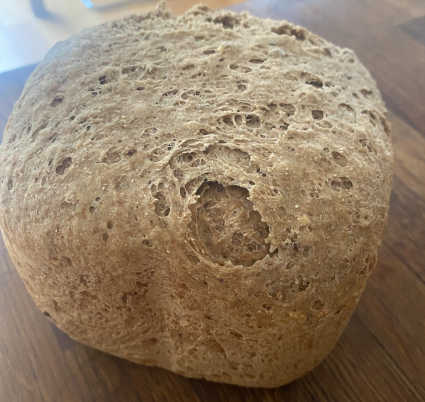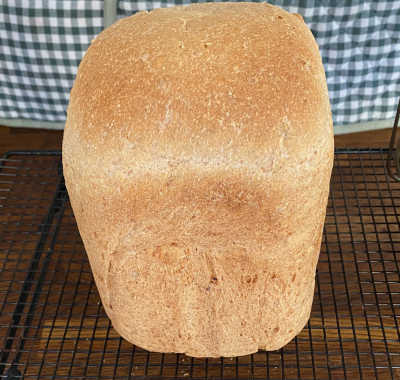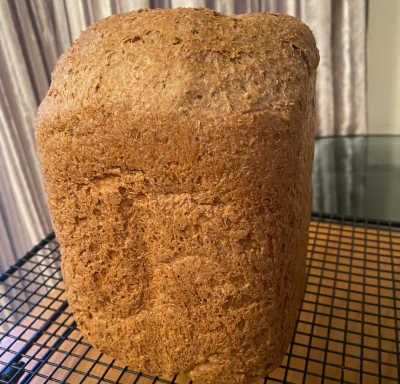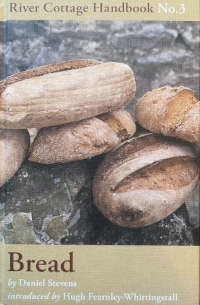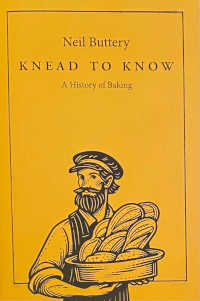Bread maker Malted flour loaf
Malted flour has its own character and works well in the bread-maker, even on the regular setting. There’s a lot of different malted flours, but only Hovis flour can be called Granary as they own the trademark for it.
I’ve tried many different types of malted flour and found that there is a lot of variation between them. What you may find is that some require a slightly different water to flour mixture than this recipe, I’ve found a couple of malted flours need slightly more flour than shown here. You’ll be able to tell as if that’s the case it won’t form a proper ball in the bread-maker.
Bread maker Olive and Italian herb loaf
Personally, I really like Focaccia bread, and I wondered if I could make something reasonably close in the bread maker. Obviously it won’t be flat like the Focaccia is, but it could share some of the features of the bread.
For this recipe I used a mix of OO flour and strong white bread flour, but I think you could use either just as well. Use a light sugar such as either white sugar or regular brown sugar. As per the method below, you can replace around 20g of the white bread flour with rye (or other coarse flour).
Bread maker 50% rye loaf
I really like the taste of bread made with rye flour, but in the bread-maker options to use it are a bit more limited, in fact the best we can do is about 50% rye flour to 50% plain white bread flour. This recipe really delivers and upon tasting, everyone agreed this was possibly one the best loaves in the bread-maker so far.
As rye flour is both a wholemeal flour, and naturally has a lower gluten content than wheat flour anyway, then we must add a higher gluten flour into the mix so that we can get a spring dough with a reasonable rise. That’s the reason for the 50% white bread flour in this recipe. As this is rye base, for the sugar you can use a rich dark sugar such as muscovado or other brown sugar.
Bread maker everything rye/spelt/wholemeal loaf
I was coming toward the end of a few bags of flour, so it seemed like a good time to try a bread-maker recipe based on all the flours I had left. It came out much better than I expected, so I would go so far that I would try making it again.
Although this sounds quite exotic, it can be made in just about any bread-maker on the regular setting. I would probably recommend the darker/longer bake setting if you like the crust to be crunchy.
Bread maker 50% wholemeal loaf
This hearty 50% wholemeal bread tastes fantastic and can be made on the regular setting in the bread-maker. Using a good strong white flour it will raise well producing a nice and light loaf.
Wholemeal flour still contains more of the bran/outer shell, and as a result it has a lot less gluten than white flour. Given this, the bread-maker has a special mode for wholemeal flour that allows more proving time. If this mode is used with white bread flour (even 50%) then the dough will over-prove and often collapse during cooking.
Bread maker seeded wholemeal loaf
When you want a wholemeal loaf without much effort, then this easy recipe that can be made in the bread maker is a good option. This recipe produces a tasty loaf that rises well, and just requires a bread-maker that has a wholemeal setting (most do).
Remember, you don’t need a particularly fancy bread-maker to get good results. I have an Ambiano machine that was bought from Aldi several years ago and it works perfectly well quite honestly. There’s a few features I would “like” in a better machine, but it is more than good enough.
Book review: River Cottage, bread
For me this book was that pivotal book that I needed (and why it’s the first I added here), after reading the River Cottage book on bread came the moment that I truly got a handle on baking. I’d read a few books before, but none of them really put all the pieces together for me.
I read it a few years back now, and I went from making bread that people would pretend to like, to making bread that rivalled what you can buy. The book goes step by step through the process of making bread, first covering the raw ingredients, followed by how to combine the ingredients, kneading and proving then finally moving on the the baking process. Each step is covered in great detail.
Profile - DaveTCC
DaveTCC is the sites main chef! In his spare time System likes listening to music on vinyl discs, cooking and baking..
Profile - System
The machine room. System looks after the main parts of the site (such as the categories and tags). In his spare time System likes listening to music on vinyl discs, cooking and baking..
Book review: Neil Buttery, Knead to know
While browsing around Waterstones bookshop I came across this book with a catchy title. It goes through the history of baking, along with a little of the science as to why various aspects of baking work the way that they do. I found it a very interesting read.
It covers some of the earliest baking products such as pancakes, and other “baked goods” that didn’t need a particularly complex oven to make well, right through to the “relatively” modern masterpieces that we take for granted today. There are also very interesting chapters on the history of cakes, including where many different cakes I took for granted in my childhood actually originated from. Lastly there’s a chapter on pâtisserie, covering my favourites the pain au raisin and croissant in detail.



